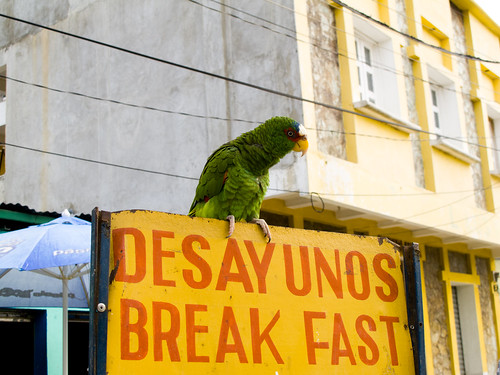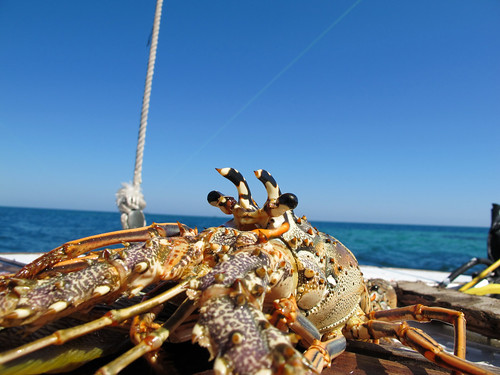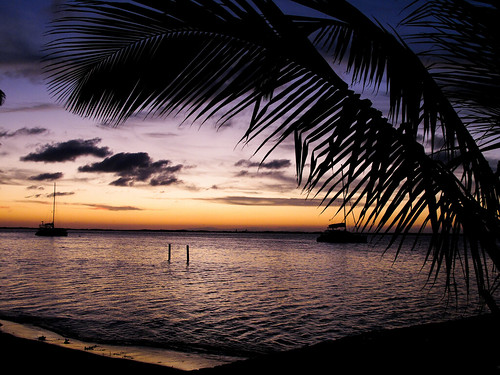Tallying up the Cost: How I Afford to Travel

No matter who you are one of the biggest obstacles and considerations when planning a trip is cost. Out of all of the reasons regularly given for why people “can’t” travel, cost is the one I’ve found to be the most common and frankly, it’s with good reason. Jumping on a plane, flying across the world and spending several weeks away from our normal day-to-day infrastructure has the potential to not only be stressful, but also quite expensive. Especially if you treat your travel time as a vacation “splurge” as most Americans do.
The great news is, it doesn’t have to be. Ultimately, it comes down to how you’re willing to travel. Splurge travel is terribly expensive but often reflects how we’ve been told we “need” to travel. The truth is, budget travel is all about re-framing your normal day-to-day lifestyle so it works for international travel. By doing this I was able to spend 36 days abroad in 2009 on two separate trips while holding down a normal salaried job while limited to two weeks paid vacation.
The final cost for both trips including airfare and all ancillary expenses? Less than $5500 dollars. The exciting part? If I’d truly wanted or needed to, I could have easily done the trips for $1,000 less. As is, I’ve found that Ive historically averaged about $2700 for a 16-18 day trip to Europe and about $2300 for a 20 day trip to Central America.
How To Do It
Most people will tell you that budget travel starts when you hit the road. It doesn’t. It starts at home, months before you begin a trip. The key to being able to afford to travel at all is managing your expenses and eliminating areas where you’re throwing away money. Once that’s done, it’s important to look through your daily lifestyle expenses in order to identify which expenses are flexible and which expenses are fixed. More on this in a second.
First: What you DON’T want to do is book a ticket, and put your entire trip on your credit card, planning to pay it off once you get home. What you DO want to do is eliminate all credit card debt. If you’re a 20 something reading this blog, there’s a decent chance that you’re not paying your credit card off fully every month. If you’re in this category, you’ve got a HUGE expense that you can easily eliminate. Interest costs money especially if you’re paying 15-20% APR. A lot of money – as in hundreds if not thousands of dollars extra each year. By paying off their credit card debt and adopting a policy of paying off your total in full each month – you’ll find yourself with a lot of extra money for future trips.
Second: Cut out major splurge expenses. It never ceases to amaze me how the people who constantly complain about lack of money turn around and spend ridiculous sums of money. I regularly see these people spend hundreds of dollars on tickets to see a musical performance or at sporting events. If not some sort of live, one time event, it’s usually hundreds of dollars spent on things like electronics, designer furniture, expensive hair salons or overpriced clothing. Eliminating a few of these expenses a year may be enough save up for the trip of a lifetime.
Third: Food and Bar tabs. If you’re in your 20s or 30s and live a social life style, you’re probably spending a lot of money on food and drink. As a single, 20 something male, I know that this is the area where I’m able to make the biggest cuts. Bar tabs can be insanely expensive. If you’re one of those people spending $60-$200 on bar tabs a weekend, a few basic changes will add up quickly. Don’t get me wrong, I’m not saying don’t go out. I’m saying drink smarter and spend less. Significantly less. Like to eat out? Consider trading fancy high end eateries for often equally delicious, albeit significantly cheaper local venues and dives.
For the average person, following the tips I’ve outlined above should save you at least $1,500 a year. For most, it’ll result in saving significantly more.

The Next Step
After re-evaluating your current expenses and identifying areas where you can make cuts, it’s important that you identify different types of expenses. Some expenses are location specific and aren’t flexible. From trips under a month in duration you’re pretty much stuck with things like your monthly rent check, cell phone bill and car insurance. However, other expenses – like food, gas, entertainment and bar tabs – are flexible. This is the exciting part, because by re-allocating those expenses during your trip, you’re actually going to be depleting your savings far less than you expect.
Tally up your average weekly expenses in this category and pay special attention to the final number. I know that I average about $12/day on lunch, $10/day on dinner, $40/week on Gas, $20/week on entertainment and $50/week on bar tabs and random meals. That alone accounts for about $264 in expenses a week and leaves out a number of similar expenses. It also means that I can spend at least $528 over a 14 day period on the road without changing my cost of living, a single penny.
You’ll also need to take into consideration your type of employment. Are you paid hourly or are you on salary? Again, this is significant because it dictates the extent of your opportunity cost. An individual on salary taking paid time off has a major advantage over someone who works hourly for tips. The unfortunate reality is that the opportunity cost for the salaried individual, who’ll have an uninterrupted revenue stream is dramatically lower, than that of the hourly worker who won’t be able to work/collect a pay check while abroad. The trade off, however, is that it’s significantly easier for the hourly employee to take off several weeks at a time. Regardless, don’t forget to take your type of employment and opportunity cost into account.
The Trip
Travel for less – How? By picking a time for the trip that is slightly off season. This is important because airfare, accommodation and even food can be much, much cheaper. Remember, the more money you save on each of these (within reason) the sooner you can take your trip and the more trips you’ll be able to budget for.
Keep it Regional – Let’s assume you’re like most Americans and you’ve budgeted for a relatively short trip (20 days or less). The temptation is to try and visit as many locations and countries as you can possibly squeeze into one trip. Honestly? Don’t. I regularly talk to friends who plan on seeing London, Paris, Berlin and Rome in a two week trip. Unfortunately, these types of schedules are a horrible idea. Traveling costs time and money – especially when you’re covering large distances and crossing international borders.
Cut your expenses dramatically by planning regional trips that avoid long leg voyages. By doing this you’ll save a lot of money, see more, and get more out of the experience. Unfortunately, capital cities are capital cities. They’re typically big, industrial and modern. Sure, each has it’s own flavor and unique draw but the real adventures and beauty lies in a country’s other cities and towns. After all – what would you think of America if all you came and saw was Los Angeles, Detroit and Philadelphia?
Be Reasonable – You don’t need to stay in a 4 star hotel to be happy and get a lot out of your experience. Remember, your goal is to minimize a-typical expenses. Besides, the truth of the matter is you’re going to enjoy yourself far more in a hostel then you would in a hotel. Book hostels, and consider couch surfing as a way to reduce accommodation expenses and increase socialization. Remember, there’s no better place to meet friends and travelers than in a hostel common area or bar. Besides, most hostel bars and restaurants have food for far cheaper than the surrounding area. Feeling the need to splurge a bit? Then splurge on a smaller room at the hostel – instead of blowing your daily budget on a private room at a hotel.
Eat and Drink Smart – Your three major expenses on the road will be food/drink, accommodation and travel. In fact, these three should/will probably make up some 2/3 of your daily expenses. Be smart about it and push your boundaries. Identify the local budget foods (Indian in the UK, Gyros in Greece, Kebabs in Europe, Beans and Rice in Belize, Tacos in Mexico etc.) and eat those regularly. Heading to the pub? Stop at the supermarket first and pre-game. Alcohol is expensive, be smart and remember – other travelers are on their own budget, so there’s no reason to be a big spender. If you’re going to buy someone a drink keep it to locals-only as a thank you for their hospitality, no reason to go off and buy round after round.
Don’t Shop – Sure, everyone asked you to pick them up something before the trip. Not to mention, the shoes sold in Paris are – I’m told – quite fantastic. But, let’s be frank. You’re there to experience the culture, meet people, see amazing things, and maximize an already stretched budget. Not buy worthless shit. If you’re going to pick up a keep sake or two – go for it when you find them on sale. If you need a shirt or jumper while on the road? Then pick one up – but don’t go off on a silly spending spree. I can’t tell you how often I see people start a trip, arrive at their first destination and blow a small fortune on crap – before they’ve even gotten up and going.
Above all – Get out there and have fun. The biggest obstacle to travel and taking a trip is excuses. If you make the decision to take the trip, stop making excuses, and prioritize – you’ll be able to enjoy the wonders of the road in no time. Stop wishing and start doing!
You’ll notice that this post doesn’t dive heavily into the finer details of budget airlines, etc. for that I’ve taken my previous Tips and Tricks list and created http://theultimatepackinglist.com – hope you find it equally as useful!
Have another piece of advice? Please share it in the comments! As always, thanks for reading!



Perhaps a word about the 39 days abroad with only two weeks of paid vacation? Inquiring minds want to know.
You bet. First and foremost, my employers are fairly flexible. The fact that I'm able to take all of my time off in one lump is, I admit, a-typical.
Second – I managed the extended time off by leveraging holidays. My first trip (the shorter one) was 16 days in July which also used an extra weekend. I like to return on Mondays and go back to work on Tuesdays, even though Jetlag can be a bit brutal.
From there, we skip a lot of the major bank holidays and work through them here at the office. The trade off is that we typically close the office for Christmas and New Years. By leaving on December 16th and returning on January 4th I only had to take one pay period's worth of unpaid time off. In retrospect, given the normal office closure (23-3nd or so) that was probably more than I should have, but the trade-off for the early departure was well worth the extra ding.
The end result was a 16 day trip and a 20 day trip. The cool part is, that these were on top of an 18 day December 08 trip to Spain. We'll see how it works out come July, but my hope is that I can manage 16+ day trips once every 6 months or so.
great post! i think we're saving a small fortune because we don't drink.
No doubt about it. Drinkers/smokers and those who do both definitely spend a small fortune over the course of a year.
I knew its typically big, industrial and modern. Sure, each has it’s own flavor and unique draw but the real adventures and beauty lies in a country’s other cities and towns.
Budget Travel Blog
Point Break – A Perfect Bar Experience in NYC
A local friend recommended and took my Cali group to this amazing bar. He said that mostly locals came here so I didn't really know what to expect ambiance wise… but screw it, the view at this bar was absolutely breathtaking! No joke. I felt like a celebrity w/ superstar treatment as the staff are friendly and amazing to say the very least.
I don't know who the house DJ was but he definitely was playing music right up my alley. It would've been my dream for people to start dancing, but it's all good.
It's a bit sceney for my taste, but it really didn't bother me much. the bartenders knew their stuff, although their 1st cocktail was a little weak, when he saw i understood cocktails the next 2 were stronger. I also liked that even though the place was really hopping the bartender remembered what i was drinking when i came to order another. (he also understood how good a gin hendricks is, and not to overpower it with the mixer). It was amazing to see their “das boot” which is shaped like a boot filled with beer. Don’t get me wrong, I am not drunk…it’s an actual boot shaped beer container ready to be emptied..try it ..you will love it!! Oh..how can I forget, they even have a wheel o' shots where you just have to spin it and have to drink whatever shot it lands on!! Now call that bar creativity at its best!!!
We ordered the Veal and Fish Tacos. They were delicious. Mm! We ended up asking for spoons to polish off whatever remained in the platter. (Faux pas? Who cares as long as it gets in my tummy.) The fries were crispy, but not overcooked, just the way that I like them.
So take in this scene: You walk in to what seems like an overly crowded place, but soon fine an empty table. Time seems to stop and the only indicator of the night moving on is the moon and your brain cells slowly going to bed forever. The music is not to loud and the people around look good, the only thing left for you to do is to enjoy that drink you paid ridiculously low for and laugh at the joke your co-worker just told.
The vibe of the place just never seems to die out and if you happen to spot some NYC socialite, sports player, or star, don't let it get to you… because for that moment, this night they are no long more important than then you. In fact go up to them and introduce yourself!
All in all just a great place to meet new people, or just have drinks with people you already know. I've been to numerous bars in the city but i would say this place is just great. Very welcoming staff, very laid back ambiance. I’ve been here twice after my first visit with my Cali group . I would say its worth the every penny you spend!!
I've read your blog and it seems interesting and points directly to issues pertaining to traveling and how to budget what you have. Really the best thing to do is Planning before taking the road trip or maybe overseas traveling. I appreciate that you have this site, it gives a backgrounder and hints on what a traveler needs to do and prepare for through your experiences.
Thanks for reading Teri!
love the rationalization! some good things to remember
Thanks Melissa!
It may be great to “dine out” all the time when on a trip, but my best experiences have been of the “packed lunch” variety. When traveling abroad, we’ll sometimes prepare before hand, stop by a store and pick up the basics – canned tuna or salmon, bread, and mayo (or our preference, miracle whip – we’re weird, I know) – or even just some local Jelly and peanutbutter. making sandwiches and bringing drinks along with us and throwing them in a bag saves us on having to find ourselves a restaurant. We’re hungry? We can stop someplace w/ a great view and have a picnic.
Love it. Everything you say is true. My tips: street food, buying food from (cheap) supermarkets and packing your lunch for the day, even packing muesli bars or energy bars can be a real money saver, especially if you get cravings when travelling. Oh, and when going to slightly less developed countries, bring tissue or toilet paper along – can save you having to buy it when you’re there at often inflated prices
Definitely a must carry!
Hey Buddy excelent page!
Greetings from Colombia
Thanks for reading and the kind words!
Sound advice, if travelling is the priority then making some adjustments to how you spend your money not only when travelling then some sacrifices will need to be made. Thanks for sharing Alex
Thanks for the comment Ian! It’s definitely worth cutting a few pennies here and there ehh?
I love this post!! Absolutely spectacular!! I decided that next year I will take 6 months off to travel, and have been counting my pennies since. I started to try saving more money in January, and was hugely successful. Living in NYC, everything can be a splurge, including morning coffee. I wrote a post in January about how I can save (http://dotsconnected.net/2011/01/10/the-saving-challenge-2011/), and since then have put $3,500 into saving, and lost $1,600/mo in income – and that’s just cutting things like coffee and a breakfast tart! It’s amazing how much can be saved by cutting those little things you don’t really think about on a daily basis.
Katrina, that’s fantastic. Thanks for sharing some of what you’ve done to cut costs. Sounds like you’ve got a great trip in the works!
Alex, these are really sound tips! I’ve found the more I travel the more I’m careful about what I spend my money on. It’s tempting to buy things or eat a nice meal but when I remind myself this is depleting my travel fund I usually talk myself out of it
Thanks, it definitely does offer a lot of perspective and change where value comes from.
Alex, your post is very thorough with some common sense tips. I like how you show that you can save for a trip before you go, so that you CAN go. One idea that I also suggest is to have a “splurge jar” for loose change that can accumulate for that one thing that you do on your trip that’s a bit more expensive. I always like to dine at least one finer dining establishment when I’m visiting a foreign city and use my “splurge jar” to cover the extra cost.
A great idea! Love it!